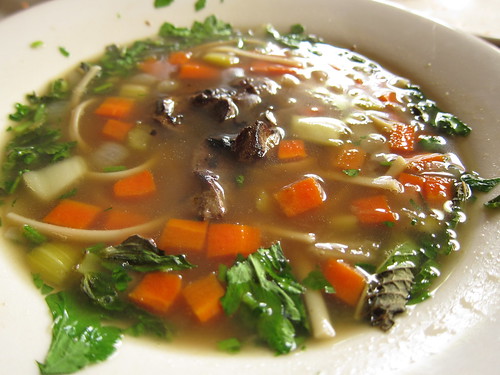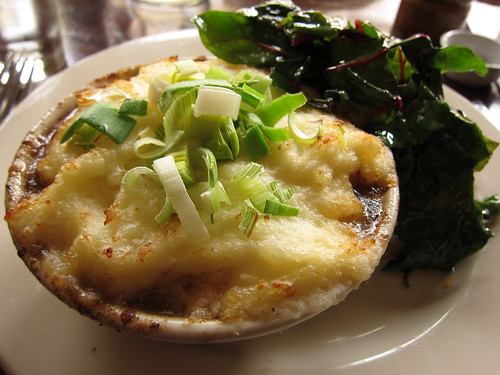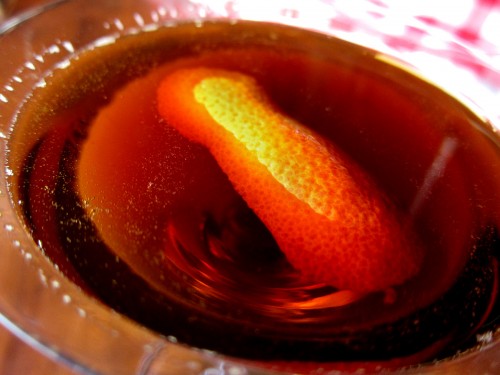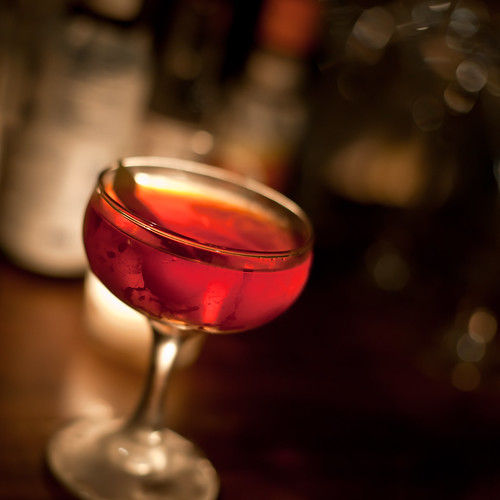Spirited Dinner at Feast, Drinks by Jackson Cannon
[NOTE: This is a preview post highlighting an upcoming “Spirited Dinner”at the 2011 Tales of the Cocktail in New Orleans, taking place July 21, and is is crossposted from the original post at Talesblog.com.]
You know what the worst thing about Tales of the Cocktail is?
Well, other than oppressive heat in New Orleans in July (solution — stay inside and drink!), forgetting to avail yourself of the spit bucket while tasting spirits all day long (ooh, learned that one the hard way) or having two fantastic seminars taking place at the same time and having to decide which one to miss?
It is having TWENTY-FIVE fantastic dinners with amazing mixologists pairing cocktails with amazing chefs’ dishes happening simultaneously, and having to pick ONE. That would be the Spirited Dinner series, in all its glory and intense frustration.
Pick just one from all of these?! Excuse me while I go stand in the corner and tear my hair out.
Many of these dinners look so good that I’m beginning to wonder if the only way to decide is to spin a big wheel, roll dice or perform a series of coin flips. Or … maybe you just need a little nudge in the right direction.
One of the most tantalizing looking menus offered this year is from one what is perhaps the most unique restaurant in New Orleans — Feast. It’s a newcomer to the city, having only just opened in 2010. In fact, the original Houston location only opened in 2008, resulting in immediate accolades and James Beard Award nominations. Chefs Richard Knight and James Silk are from England, and own the restaurant with Silk’s wife Meagan. Their approach is “rustic European fare,” concentrating on beloved and comforting dishes they grew up with in England. The chefs are also strong advocates of “nose-to-tail” cooking, using all parts of the animal (and introducing adventurous New Orleanians to the joys of offal). They round out their menu with historic English dishes and other dishes and influences from around Europe, all bound together by one thing — flavor. Their concentration on only the finest ingredients, locally grown, and only animals from small farms and never from factory or industrial farm sources combined with the fact that they’re really great cooks brings us superlatively delicious food.
They were so taken by New Orleans that James and Meagan moved to the city to open another branch of Feast, and all of them commute back and forth between the two restaurants. I think Feast is a terrific addition to the food culture of New Orleans
Here are a few examples of a recent meal I had at their Houston location back in February:
Welsh Rarebit, Feast-style. This isn’t your toasted white bread with beery cheese sauce poured on top. The bread was thick, rustic, hand-cut and grilled. The “sauce” was more like a thick paste of cheese and ale and spices, robust and tangy. It was unexpected, and delicious.

Duck Livers in Beef Broth with Mint and Fresh Vegetables, which seems simple enough but offered many layers of flavor. The deep, rich flavor of the livers, the broad beefiness of the broth, crisp-tender vegetables is sort of a large-dice mirepoix and the brightness of the fresh mint and parsley … wow. That’s some soup.
Braised Pork Cheek Pie with Red Chard “Bubble & Squeak.” Oh my. Put any animal’s cheek on a plate and I’ll probably eat it — it’s such a profoundly rich and tender cut of meat, full of flavor.
Blackberry-Pear Crumble with Vanilla Bean Crème Anglaise — again, simple but deeply satisfying comfort food, made with perfectly ripe and great quality fruit. And just look at all those vanilla bean specks in the crème anglaise.
You’re not getting any of this at the Spirited Dinner, though, sorry. What you are getting is a true pan-European feast, hopping around the continent and settling down in the comfort of the chefs’ native England. The astounding looking cocktail pairings come from the talented Jackson Cannon of Eastern Standard in Boston, who appears to be outdoing himself this time.
FIRST COURSE
Chilled Almond Soup with Grapes (Spain)
Aperitivo Verano – Soberano brandy, fresh muddled raspberry, Verveine du Velay, ChampagneSECOND COURSE
Scallops St. Jacques: Scallops with a Mushroom Brandy Cream Sauce (France)
Belle Normandie – Breuil Calvados, Granier de Mon pastis, Jackson’s vermouth rougeTHIRD COURSE
Parsley and Pancetta Salad with Grapefruit and Parmesan (Italy)
L’alto Stalone – No. 3 gin, Luxardo maraschino, fresh squeezed grapefruit, Amaro Abano floatFOURTH COURSE
Braised Pork Cheeks with Garlic Rutabaga and Kale (England)
Storm Port Old Fashioned – English Harbor 5 year rum, Curaçao de Curaçao, Luxardo Fernet, orange oilFIFTH COURSE
English Bread and Butter Pudding (England)
Flip Royal – King’s Ginger, rooibos tea infusion, whole egg, charged water, shaved spices
They’ve hit four of my favorite countries to eat in Europe. (Yes, four — I had nothing but magnificent food and beer in England last year. Can we finally put to death this lingering myth of English food being bad? There are bad cooks everywhere, even in Paris and New Orleans, and well-cooked English food is, as you can see, terrific.)
The soup looks wonderful, as does its accompanying Champagne apéritif, spiked with the relatively rare (in this country) French liqueur Verveine du Velay, an herbal liqueur not unlike Chartreuse although less complex, made with 32 herbs and featuring the citrusy flavor of lemon verbena. Classic Coquilles St. Jacques paired with an apple brandy cocktail scented with anise and what looks to be a housemade sweet vermouth (wow). Chef James starts ramping up the porkiness in the salad course — making him a perfect new New Orleanian, putting pork on your salad — with a gin cocktail that seems to pair beautifully with this salad in a way that could be rather difficult for a wine pairing.
Then … hooray! Our beloved pork cheeks! See, I lied — you are getting pork cheeks. Having had their pork cheeks, I can guarantee this will knock your socks off. The Old Fashioned that Jackson’s serving with it looks perfect, and I want to run home and try to make one right now. Finishing with English bread and butter pudding is just the right touch — it’s the chefs’ own native version of bread pudding, and New Orleanians love bread pudding. This’ll be a different spin on our local version that I suspect will fit in with the Creole versions quite nicely, and if we’re going to have a rich, eggy dessert why not have a rich, eggy cocktail to go along with it?
From my experiences at Feast, I can tell you that this is looking to be one of the more legendary Spirited Dinners ever. I hope this has made your decision easier, so if you’re sufficiently tempted, go for it! The price is $80, a bargain. For reservations please call Feast at (504) 304-6318, but hurry before all the remaining seats are gone!











